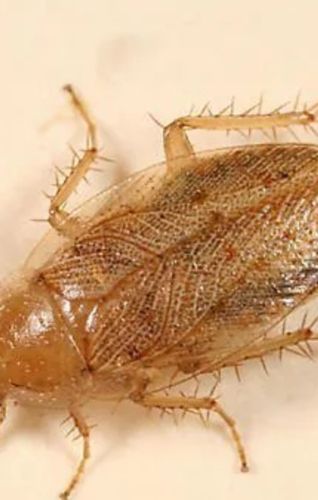Cockroach (likely German Cockroach based on appearance)
Scientific Name: Blattella germanica (for German Cockroach), but generally across the order Blattodea for cockroaches.
Order & Family: Order: Blattodea, Family: Ectobiidae (for German Cockroach) or Blattidae (for other common cockroaches)
Size: Common pest species like the German cockroach range from 1.1 to 1.6 cm (0.43 to 0.63 in) in length. Other species can be larger, up to 5 cm (2 inches).

Natural Habitat
Cockroaches are found globally, usually in warm, humid, and dark environments close to food and water sources. Common habitats include kitchens, bathrooms, basements, wall voids, and electrical appliances. German cockroaches, in particular, are highly associated with human dwellings.
Diet & Feeding
Omnivorous scavengers, eating almost anything organic. They feed on food crumbs, spills, grease, pet food, paper, fabric, and even soap or glue. They are particularly attracted to decaying matter.
Behavior Patterns
Cockroaches are primarily nocturnal and gregarious. They hide in cracks and crevices during the day and emerge at night to forage for food and water. They are known for their rapid reproduction rate, especially the German cockroach. They can flatten their bodies to fit into tight spaces. They communicate through chemical signals (pheromones) and tactile interactions.
Risks & Benefits
Potential risks: Cockroaches are considered pests. They can carry and spread bacteria (e.g., Salmonella, E. coli) and other pathogens on their bodies, contaminating food and surfaces. Their droppings and shed skins can trigger allergies and asthma attacks in sensitive individuals. They can also cause psychological distress. Benefits: In natural ecosystems, some cockroach species play a minor role as decomposers, breaking down organic matter. However, common pest species offer no significant benefits to humans in domestic settings.
Identified on: 9/2/2025